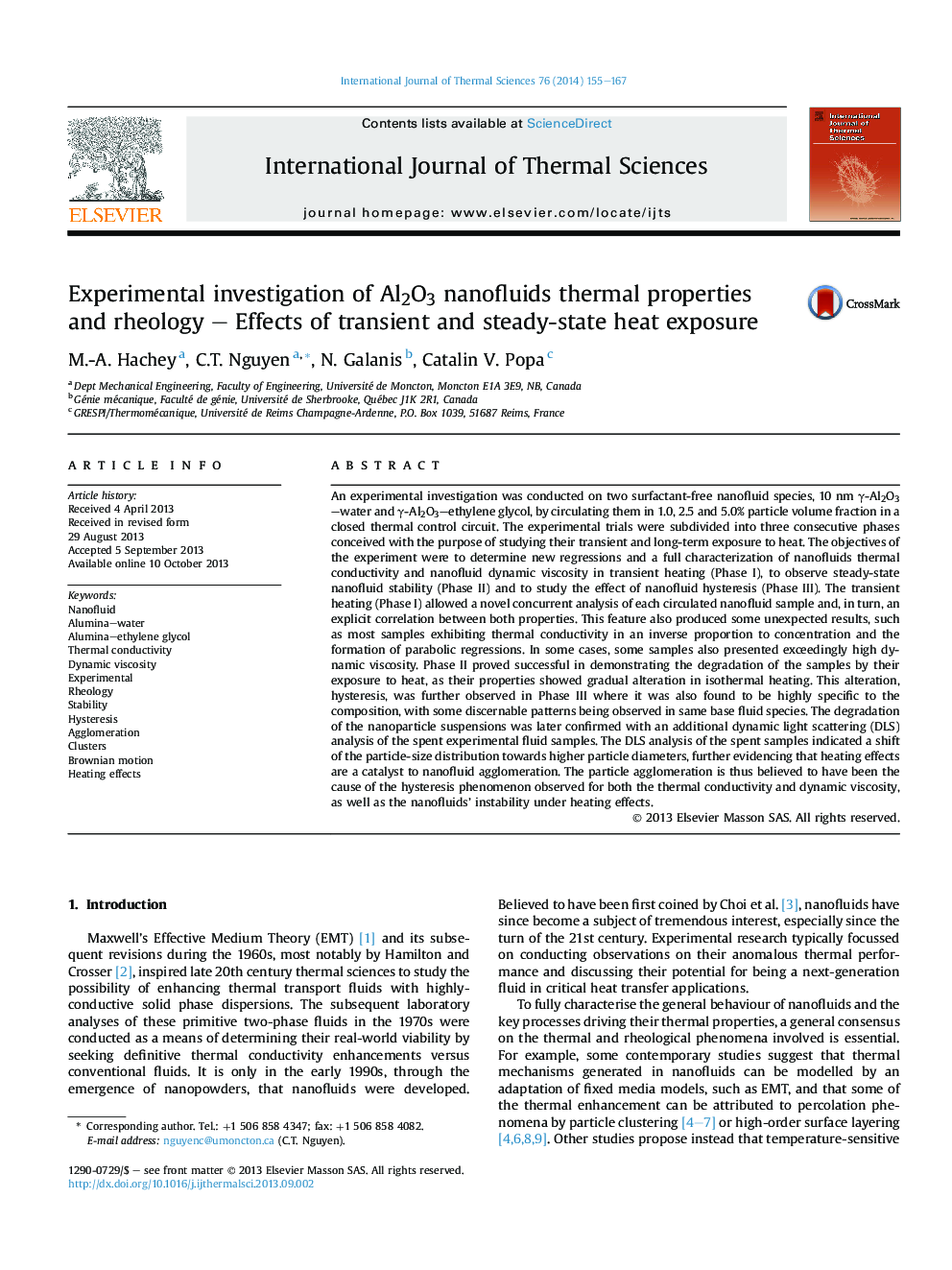| کد مقاله | کد نشریه | سال انتشار | مقاله انگلیسی | نسخه تمام متن |
|---|---|---|---|---|
| 669392 | 1458746 | 2014 | 13 صفحه PDF | دانلود رایگان |
عنوان انگلیسی مقاله ISI
Experimental investigation of Al2O3 nanofluids thermal properties and rheology - Effects of transient and steady-state heat exposure
دانلود مقاله + سفارش ترجمه
دانلود مقاله ISI انگلیسی
رایگان برای ایرانیان
کلمات کلیدی
موضوعات مرتبط
مهندسی و علوم پایه
مهندسی شیمی
جریان سیال و فرایندهای انتقال
پیش نمایش صفحه اول مقاله

چکیده انگلیسی
An experimental investigation was conducted on two surfactant-free nanofluid species, 10 nm γ-Al2O3-water and γ-Al2O3-ethylene glycol, by circulating them in 1.0, 2.5 and 5.0% particle volume fraction in a closed thermal control circuit. The experimental trials were subdivided into three consecutive phases conceived with the purpose of studying their transient and long-term exposure to heat. The objectives of the experiment were to determine new regressions and a full characterization of nanofluids thermal conductivity and nanofluid dynamic viscosity in transient heating (Phase I), to observe steady-state nanofluid stability (Phase II) and to study the effect of nanofluid hysteresis (Phase III). The transient heating (Phase I) allowed a novel concurrent analysis of each circulated nanofluid sample and, in turn, an explicit correlation between both properties. This feature also produced some unexpected results, such as most samples exhibiting thermal conductivity in an inverse proportion to concentration and the formation of parabolic regressions. In some cases, some samples also presented exceedingly high dynamic viscosity. Phase II proved successful in demonstrating the degradation of the samples by their exposure to heat, as their properties showed gradual alteration in isothermal heating. This alteration, hysteresis, was further observed in Phase III where it was also found to be highly specific to the composition, with some discernable patterns being observed in same base fluid species. The degradation of the nanoparticle suspensions was later confirmed with an additional dynamic light scattering (DLS) analysis of the spent experimental fluid samples. The DLS analysis of the spent samples indicated a shift of the particle-size distribution towards higher particle diameters, further evidencing that heating effects are a catalyst to nanofluid agglomeration. The particle agglomeration is thus believed to have been the cause of the hysteresis phenomenon observed for both the thermal conductivity and dynamic viscosity, as well as the nanofluids' instability under heating effects.
ناشر
Database: Elsevier - ScienceDirect (ساینس دایرکت)
Journal: International Journal of Thermal Sciences - Volume 76, February 2014, Pages 155-167
Journal: International Journal of Thermal Sciences - Volume 76, February 2014, Pages 155-167
نویسندگان
M.-A. Hachey, C.T. Nguyen, N. Galanis, Catalin V. Popa,